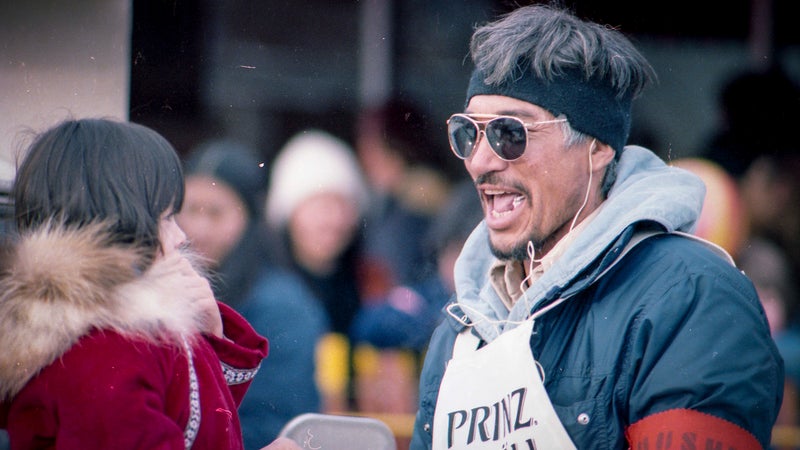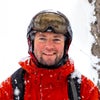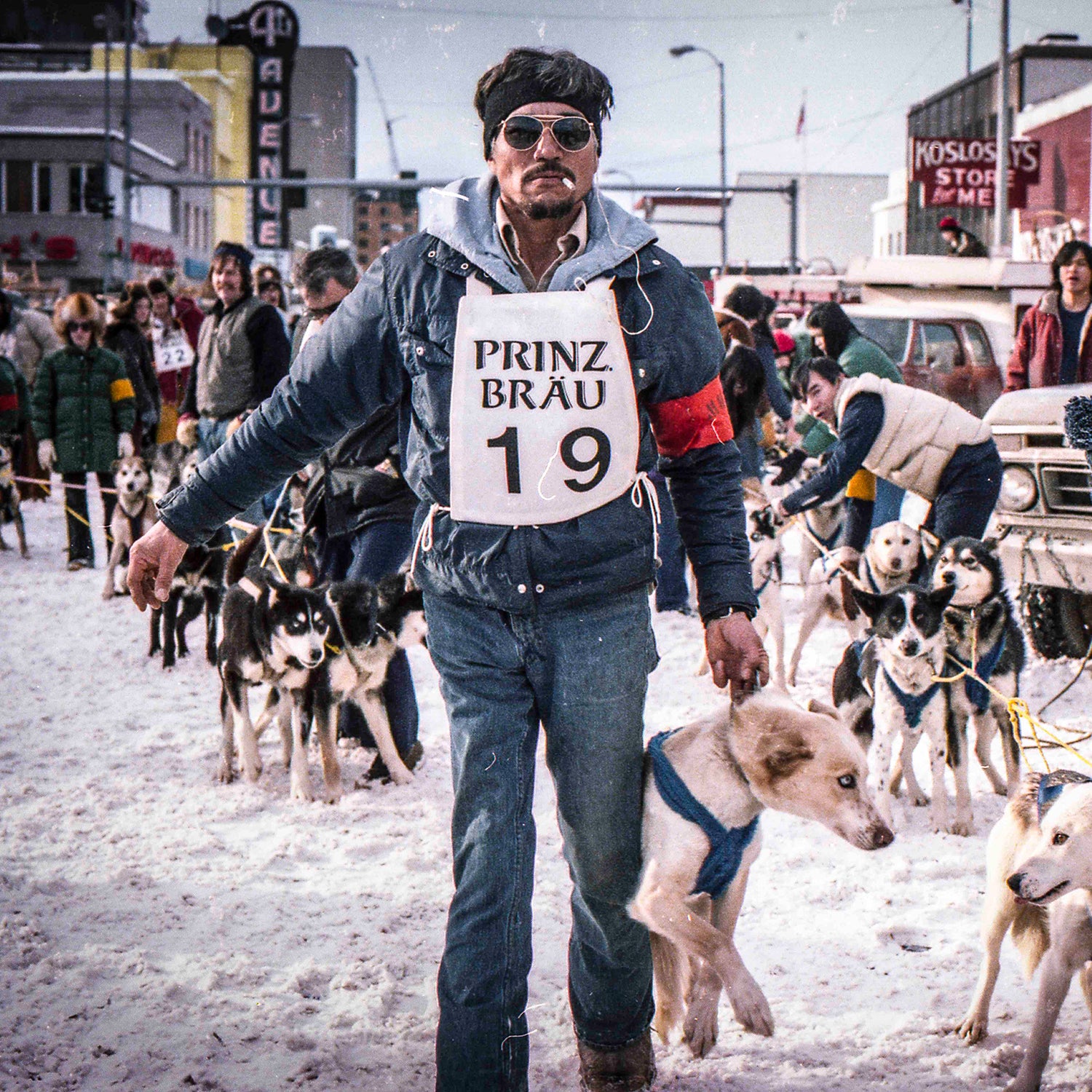Dogsled racing may seem like a curiosity—a hobby, a sport, an anachronism—but for a long time in remote Alaskan villages, dogsleds were essential to survival, the only way to get from place to place for much of the year.��They were an intrinsic part of these communities’ cultural fabric, and the skills to train and handle dogs were passed down through the generations. It was into this world that George Attla was born in 1933, in the tiny village of Huslia along the Yukon River. Attla would go on to become a rock star��of the dogsled world, a hero to Native Alaskans, winning dozens of the state’s biggest races from the late 1950s through the 1980s.��
But like so many aspects of indigenous��Alaskan culture, the latter half of the 20th century was not kind to Native dogsledding. The expense and effort required to keep a team of��dogs didn’t make sense in an internal-combustion world, and a larger cultural disruption further relegated mushing��to the fringes. Huslia grew more and more removed from its traditional ways��and began to struggle with issues like substance abuse, mental health, and suicide.��All of which left��Attla wondering whether this cultural and familial inheritance could be preserved—and perhaps even become a source of Native pride once again.��
Those questions and many more are at the center of the fine new documentary , premiering December��16��on PBS’s Independent Lens. The film, which is part biography, part sports documentary, and part elegy for a lost way of life, intercuts Attla’s remarkable story with his efforts to mentor his 20-year-old grandnephew, Joe Bifelt, who came home to the village from college in 2014��to spend a year learning at the knee of the great, though ailing, musher.
The film begins by traveling back to Attla’s childhood. After contracting bone��tuberculosis when he was eight, Attla was sent out of the village to a hospital in Sitka, over a thousand miles away, where he spent most of the next nine years undergoing and recovering from surgeries. He��emerges��with his right kneecap fused to the bone, giving him a lifelong limp and a unique gait. The physical trauma of his hospital stay was matched by a cultural one, as this young boy from a small Native village was dropped into the modern world. “The nurses was all white. I came from home and spoke just Indian,” Attla recalls in the film. “I couldn’t understand anything.” By the time he returned to the village at age 17, the cultural dissonance had reversed: he’d mostly forgotten the language and fallen out of step with his own culture. “I didn’t know how to trap, didn’t have a trade,” he recalls, “so I was caught between the two cultures.”��
For Attla, the search for a place to belong led to dogs, which were even more necessary to him than to the average villager. As one of his sisters says, the dogs “were like his legs,” helping him get around. And they were also a refuge, because while the rest of the village was calling him a “cripple” and saying he’d never amount to anything, the dogs didn’t notice his disability. “Dogs accept you as you are,” Attla says. “They don’t care what you look like, they don’t care what you sound like.”��

And soon��nobody else much cared what he looked like either, because their homegrown hero started winning. He��turned��his traumatic childhood into fuel for his ambition��and even managed��to transform��his limp��into something more—a trademark strut, full of the swagger that defined the goateed, gum-chewing, aviator-sunglasses-wearing Attla as his profile rose. He was known throughout the state as the Huslia Hustler, and one gets the sense that the name had only partly to do with the speed of his dog teams. As documented in wonderful archival footage, newsreels, and radio commentary, he was a savvy operator, a gifted dog breeder and trainer, and eventually an��icon.��
Meanwhile, the film documents��Attla’s efforts to prepare Bifelt for the 2015 Open North American Championship, a prestigious three-day race around Fairbanks that Attla won eight times between 1969 and 1987. It’s a tall order, given that Bifelt had only ever been on a dogsled twice, and that they only have four months to prepare. Bifelt’s previous lack of exposure speaks to a broken link in the chain of intergenerational wisdom��transfer. “In the schools these days, they don’t really teach about our culture,” Bifelt says. “Back in the village, we’re losing a lot of knowledge, our stories, our history.”��
The film highlights this tragedy, playing out across villages in the Alaskan bush: the last generation of elders to grow up speaking their own language and living an approximation of the old ways are dying��and often��taking cultural knowledge to the grave. “Our culture was basically attacked when my grandparents were young,” says Bifelt. “Fast-forward to now,��I can’t speak my language fluently.” Bifelt knew that his great-uncle was a racer��but didn’t learn how dominant a champion he’d been until he was a teenager—up until then, Bifelt had been basketball obsessed, and his heroes were��LeBron James and Dwyane Wade. “In our culture, we don’t like to brag about ourselves,” he says. “I didn’t have too much experience with champions who were Native like me.”
The film does a good job of referencing all of this context, but there’s rarely time for any exposition, which is where we arrive at my chief complaint,��which is really more of a compliment: it should have been twice as long. Attla’s life is too interesting��and touches on too many important issues in both Alaskan history and the��present that��go unexplored at��its 55-minute run time. For an audience��who��may not know much about Alaskan history, some additional explication might have helped.��
In the end, the old man, who Bifelt calls Grandpa, does all he can to coach his grandnephew along.��There��are things about raising and training dogs that surely transfer, but these scenes reminded me of that old adage, that the best players don’t always make the best coaches. The thing that drove Attla��so hard to win—the fuel for his fire—can’t be taught, certainly not in such a short time. “You have to race like your life depends on it, like you’re hungry,” he tells Bifelt at one point. “At least that’s the way I used to think.”��
Attla does not live long enough to see Bifelt compete in the race they’d been training for, landing in the ICU of an Anchorage hospital a few weeks before race day. “I’m proud of you, proud of you for wanting to learn from Grandpa,” he tells Bifelt from his hospital bed. “I know you need a lot more answers, but Grandpa is gonna die. I didn’t last as long as I thought I would.”
Not long after Attla’s funeral, Bifelt��steps��up to the starting line of the Open North American, wearing the aviator sunglasses and headband that were Attla’s signature look. We won’t spoil the outcome, but it’s safe to say that Bifelt��has proven himself a true student, bighearted, observant, and respectful. Which is why it’s so lovely to see him, at the��film’s end, having decided to pursue a teaching degree and already engaged in��mentoring the young mushers who he hopes will come up behind him. In his case, winning means mending the link in that broken chain, passing along this family tradition, and preserving one small corner of a culture that has been marginalized for too long.


